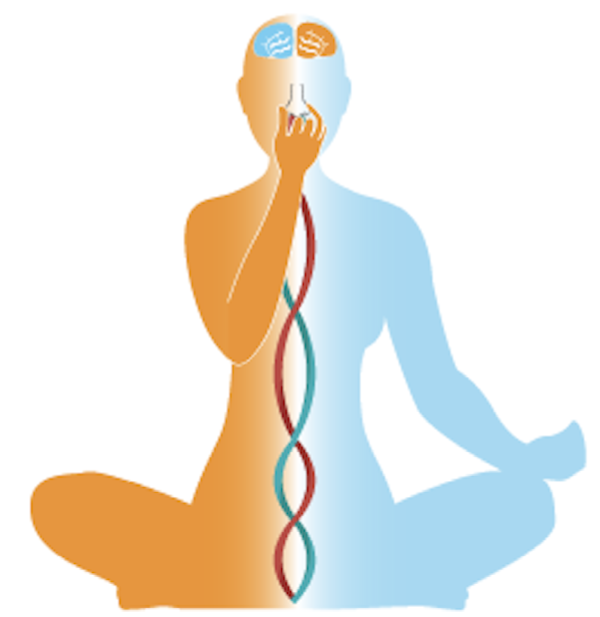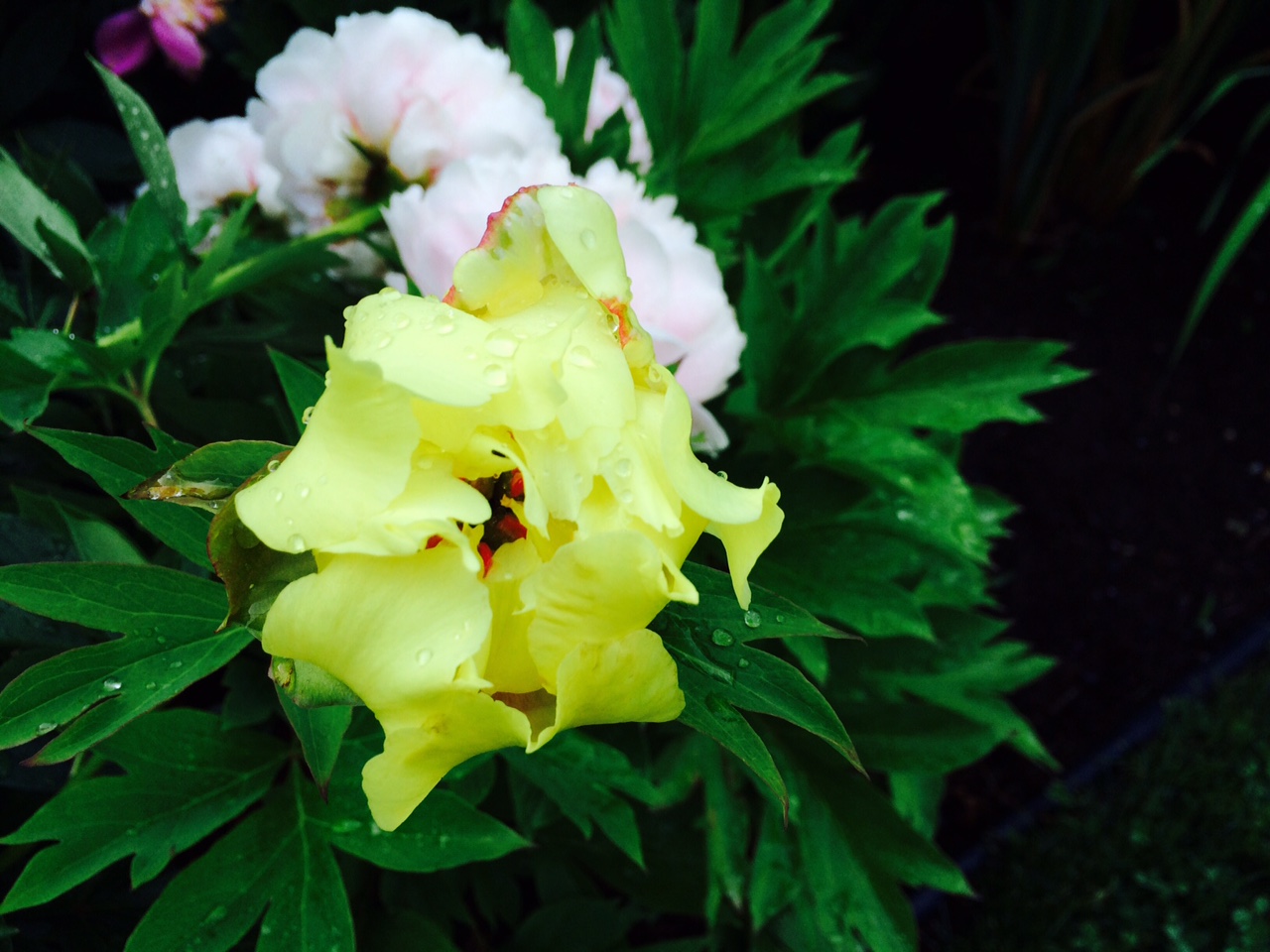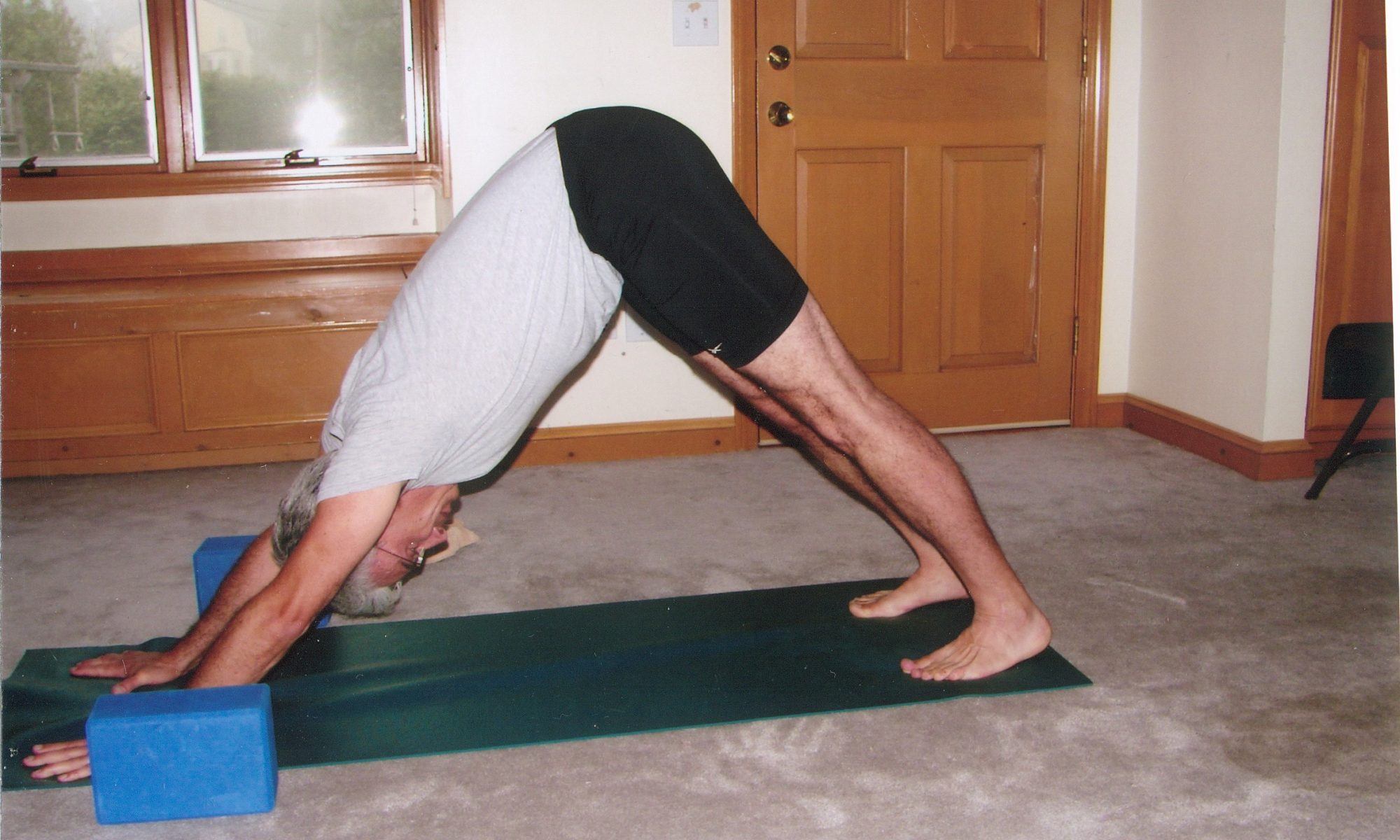Caveat: check with your physician before beginning ANY new exercise routine!
Abdominal Breathing
This post is about abdominal or “natural” breathing, in which we breathe into our stomach rather than our chest.
Voluntary Breathing
Overriding our involuntary breathing and consciously controlling the rate and depth of our breath (Pranayama) has both long-term and immediate benefits, reducing stress and deepening breathing capacity.
Diaphragm
Our diaphragm does most of the work. It’s a large, flat muscle that divides our abdominal cavity in two just below the ribcage.
Like our heart, it can be difficult to feel our diaphragm internally as it moves up and down – but trying is an excellent concentration exercise!
Our diaphragm is a fascinating muscle: akin to a flat rubber sheet, it’s the only muscle in our body that contracts in two directions!
When we inhale – the bottom of our diaphragm contracts initiating an inhalation, drawing the center of the muscle downward, pulling air into our lungs, pressing down on our lower abdominal contents pushing our stomach out.
When we exhale – the top of our diaphragm contracts initiating an exhalation, pulling the center of the muscle upward, expelling air from our lungs, releasing pressure on our lower abdominal contents pulling our stomach in.
Phases of Breath
Our diaphragm doesn’t want to remain contracted; it wants to return to its neutral, non-contracted state.
Thus, it doesn’t take energy to return our diaphragm to its flat neutral state from either its highest or lowest position. However, while the initial phase of every breath is energetically passive, moving the diaphragm up or down past neutral (e.g., to inhale or exhale deeply) requires energy.
Exercise
I suggest softly playing a four beat meditative soundtrack, something like Jason Campbell’s Five Element Music – free on Amazon.
- Settle yourself physically.
- Sit upright comfortably.
- Relax; let go of resistance and tension.
- Close your eyes – almost.
Tune 100% of your attention to the mechanics of breathing.
Using the four-count music as a guide,
- Spend a few minutes allowing your inhalations and exhalations to equalize at approximately a 4-beat count;
- Spend a few more minutes lengthening your inhalations and exhalations to equalize at approximate an 8-beat count;
- Eventually add a 4-beat pause in between, so every breath consists of an 8-beat inhalation, 4-beat pause, and 8-beat exhalation.
- Eventually work up to an 8-8-8 count.
The goal is quiet, subtle, rhythmic breathing.
The trick is to keep your attention on the physical sensations and mechanics: feel the air flowing into your lungs on the inhalation; sense the subtle distinction between the passive, active and pause phases of each breath.
Your mind WILL drift. When it does, start again from the beginning: sit upright, relax.
Want help?
Skip Dowds
781-639-9057
Meditate. It’s what’s good for you!






